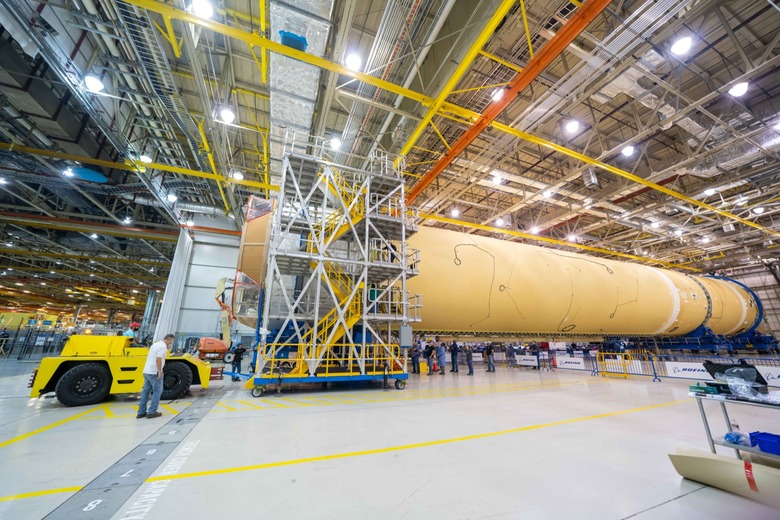NASA Just Ordered The Boeing SLS Rockets To Go To Mars And Beyond
NASA has inked a rocket deal with Boeing that will see the company supply up to ten of the huge SLS rockets the American space agency will use for its Artemis missions. The deal space exploration rocket is earmarked for use initially for Moon missions, but if all goes to plan will be used for manned missions to Mars and beyond.
The original SLS core stage was designed and constructed by Boeing for NASA's Stages contract, with the first upper stage only delivered last year. Indeed, NASA has only just completed assembling the first SLS rocket, when it added the engine section to the rest of the structure back in mid-September.
The Space Launch System (SLS) is a mild name for what is in reality a vast space craft. 212 feet tall when fully assembled, the SLS Core Stage is described by NASA as "the backbone of the rocket." It consists of five main parts, with the engine section at one end and the forward skirt at the other, and a liquid hydrogen tank, interbank, and liquid oxygen tank sandwiched in-between.
Four RS-25 engines are in the engine section, for a total of two million ponds of thrust. They're powered by 733,000 gallons of propellant, cooled significantly. The forward skirt is where the flight computers, cameras, avionics, and other technology for managing the core stage are kept.
Until now, Boeing had been contacted to build the core stages of the rockets for the first two Artemis missions. This addition to that deal is expected to include up to ten core stages and up to eight Exploration Upper Stages (EUS). The their core stage has now been funded, which gives Boeing around four years to build it in time for the Artemis III mission in 2024. That will be NASA's mission to take the first woman and next man to the Moon.

"The new contract is expected to realize substantial savings compared to the production costs of core stages built during the design, development, test and evaluation phase by applying lessons learned during first-time builds and gaining efficiencies through bulk purchases," NASA says of the agreement.
Boeing, meanwhile, is currently developing a more powerful EUS design, for use with the Block 1B version of the SLS. The company says that already, even with only one core stage under its belt, it has figured out improvements for the second. That's an important part of the process, since the rocket is intended to be adaptable first for the Mars mission, but then for transit beyond the red planet.
Artemis III is an essential element in that process, as it paves the way for longer-distance exploration. SLS will initially help NASA establish "a sustainable presence at the Moon" as well as an orbiting Gateway which will serve as a mid-point for deeper travel into the solar system. For the first three Artemis missions, the SLS will use an interim cryogenic propulsion stage. However the new EUS will be used in subsequent missions, if all goes to plan, since it will be capable of transporting more cargo.
That could include both astronauts and cargo, or even larger cargo-only shipments. When completed, it should be able to send more than 99,000 pounds to lunar orbit.
